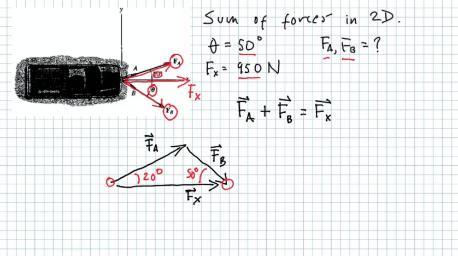Mechanics Video Tutorials for 320+ First-year Engineering Students
OVERVIEW

| MODULE TITLE: | Mechanics for Engineers |
|---|---|
| MODULE COORDINATOR: | Michael Gilchrist |
| MODULE CODE: | MEEN10030 |
| TARGET AUDIENCE: | Stage 1 Engineering students |
BACKGROUND
Mechanics for Engineers is a core module taken by every engineering student in semester one of first year. It is one of the first modules that some 320 students take upon entering university and is traditionally regarded by students as one of their most difficult stage one modules. Because students come to this module with mixed backgrounds (not all have studied mechanics or applied mathematics at Leaving Cert) and the class size is quite large, the need to augment lectures with tutorials is strong. However, the logistics and resources required to offer small group tutorials to such a large cohort of students means that it is impossible to provide these in an effective way. For example, offering one-hour weekly tutorials has, heretofore, been delivered to groups of 80 students and has required the involvement of at least two teaching assistants. This format only provides each student with a total of 3hrs of tutorials, addressing a total of three separate topics (i.e., each tutorial session is given four times to allow all 320 students attend in person).
GOALS
- Develop a video podcast to replace large group tutorials.
- Address a greater number of topics than was previously possible in physical tutorials.
- Achieve greater levels of student engagement with this module.
THE INNOVATIVE APPROACH
Camtasia software and a tablet laptop were purchased to develop these video tutorials. Over the course of a number of months, a total of 26 videos with full voice and colour content were created to cover topics that range in complexity from elementary concepts, such as the addition of 2D vectors (as an example, see the short 5-minute MP4 file indicated below), to more complex topics, such as mass moments of inertia. Sample video from the podcast series:
All 26 of these videos were uploaded to the virtual learning environment and students’ access to these was scheduled to correspond to the lecture sequence.
RESULTS
Students can access the video tutorials through the virtual learning environment, and view them as often as desired, at times that best suit their personal study periods. This has proven to be universally popular, and almost 100% of students engage with some/all of these tutorials.
Students made the following comments when surveyed during the semester:
"The online tutorials are really helpful, I can play it back as many times as I need to" "I wish other lecturers used online tutorials too"
Students’ understanding and comprehension of the entire module has improved; weaker students are less likely to fail the module because they are, at least, able to master some of the simpler course material.
"This is a hard subject, particularly the stuff on 3D equilibrium, but there are lots of video tutorials to go with the lectures"
"I wish there were actual tutorials as well as the videos - there's never enough time to ask the lecturer questions"
The video tutorials have not completely made physical tutorials redundant.